Slot machine -focus on usage
Brief
Our consumerist culture means we are fast burning through the planet’s finite resources and in the past three decades alone, one third of our natural resource space has been consumed.
Online shopping is a new way of shopping with the development of communication technology. It brings people a lot of convenience and more choices in shopping. But at the same time it has also brought many negative effects that are not generally recognized by everyone. In this project, I want to try to research and explore by designing a shopping app. Consumerism and hedonism in the fast food culture bring us life. The impact of coming and how we change.
Background (Primary research)
Before studying people’s specific shopping experience, I first look for information through books and papers. The content of these materials includes the meaning of the product, how consumerism came about, and how our shopping experience has changed.
From the data, we can see that the natural ecological environment is affected by us and our society, including our population rise, technological progress and changes in consumption patterns.

It is precisely because agriculture has released billions of manpower, absorbed by factories and offices, that a variety of new products began to pour out like an avalanche. For the first time in human history, production has exceeded demand. Because of this, a whole new question arises: who is going to buy these products? (Harari, 2017)
“Object is the unity of commodity attributes and symbol attributes” (Baudrillard, 2017). While the objects surround various commercial activities, the symbols behind them also render the cultural atmosphere of various activities, thus forming the “environment” of social life (the increase in gross national product and the waste behind the great abundance).
This environment also causes people to often ignore the true use value of the goods when shopping, and forget whether they really need these goods, but indulge in the spiritual value outside the goods, such as the symbol attributes attached to the goods by the manufacturer in.
This is the first cigarette making machine manufactured by Cubans in 1867. This machine can produce 200 cigarettes per minute. This number is far greater than demand, so cigarette manufacturers need to solve the problem of overcapacity, so they adopted a series of sales methods.
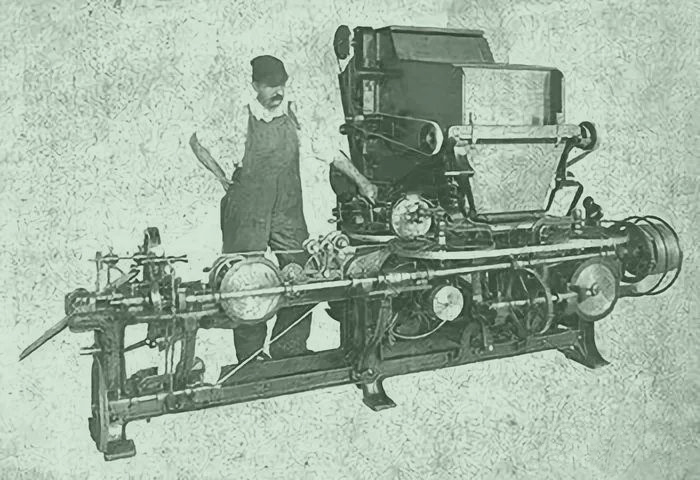
First of all, due to the imperfect medical level at that time, the public did not have any awareness of the harm of cigarettes. So the manufacturer gave the doctor free cigarettes during the promotion, and attached a small question “Do the Luckies brand cigarettes have less irritation to the throat than other cigarettes?” After getting the doctor’s affirmative answer, they changed to the advertisement. The language reads “20679 physicians say Luckies are less irritating”. After a large number of tobacco advertisements endorsed by doctors appeared, businesses gradually combined tobacco with doctors, health, and trust.
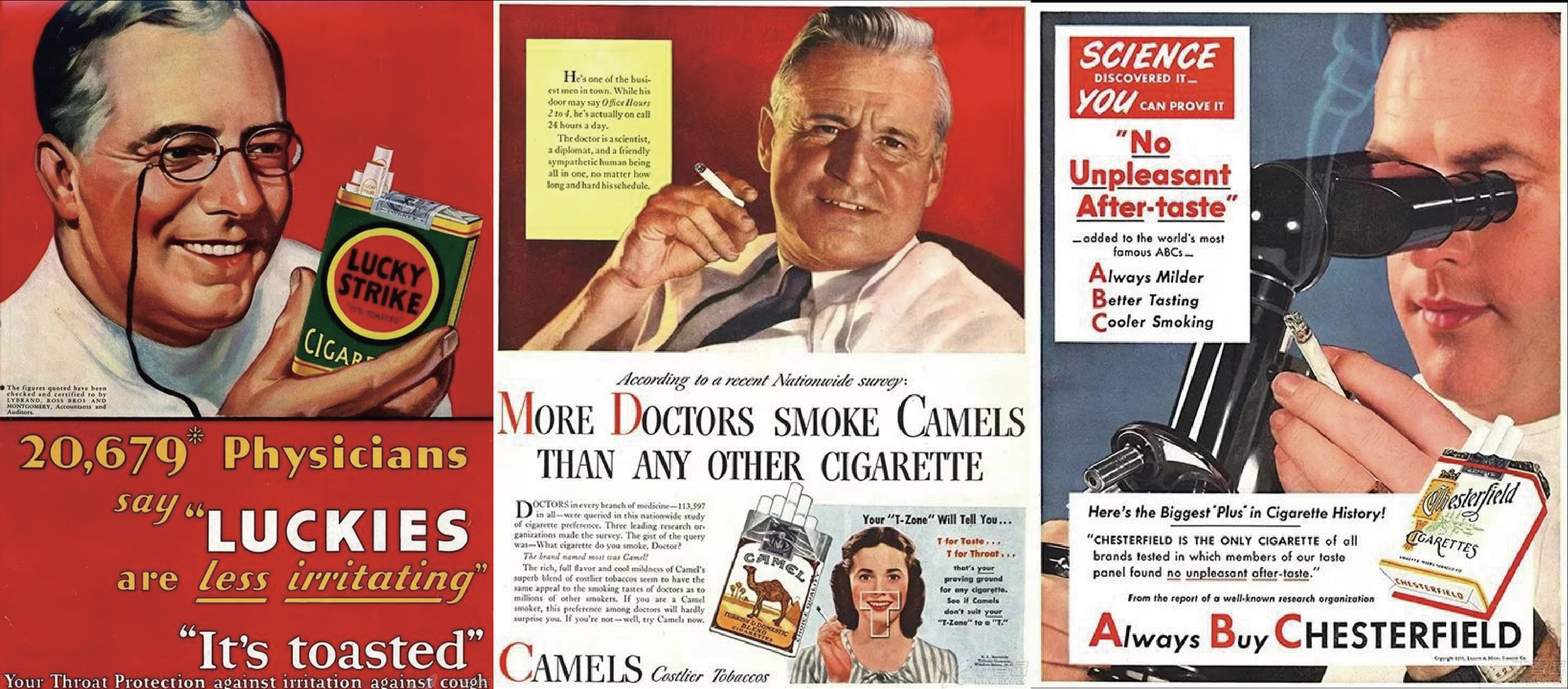
But in 1950, after a historical paper on the carcinogenicity of smoking appeared in The Journal of the American Medical Association, people realized the dangers of smoking. Therefore, manufacturers use magazines, movies and other massmedia to encourage people to associate cigarettes with feminism and freedom.
Diamonds are the same. “A diamond is forever”, this is a well-known advertising slogan. In modern society, we have generally agreed to the view that diamonds are a symbol of love.
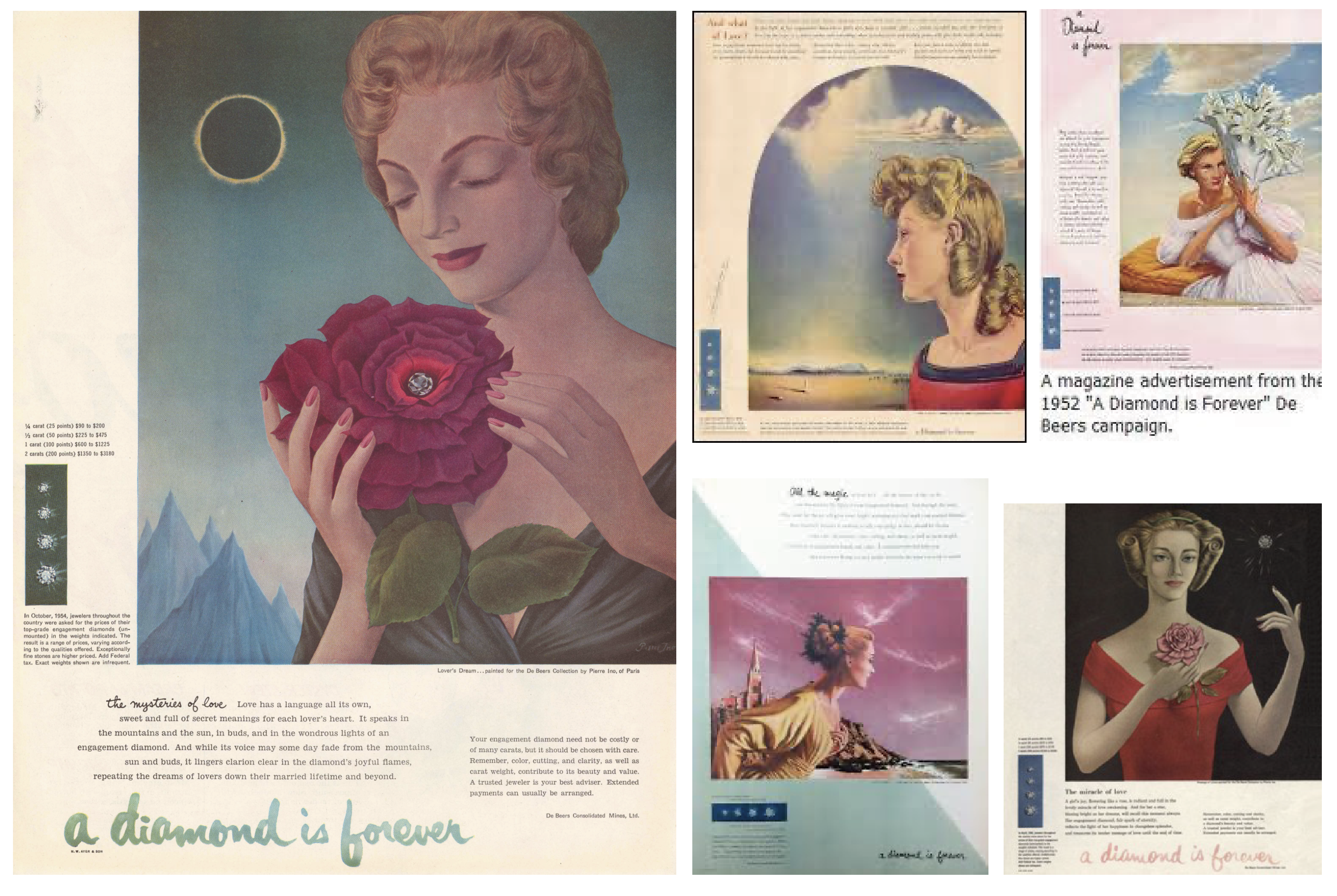
China is now one of the largest diamond markets in the world. By the middle of 2010, 80% of newlyweds in Beijing purchased diamond rings (Meredith 2007) “by the consumer’s desire to symbolise success and, on the other hand, by the cultural tradition of viewing expensive jewellery as a form of wedding equity” (Wanning 2017), and these two brothers’ opinions are all passed on to consumers in a subtle way by merchants.
Some information I got through preliminary research:
- The object is a unity of commodity attributes and symbol attributes
- As the output of technology and social progress is far greater than the demand, the merchants have expanded the symbolic value of the goods in order to promote the products.
- Modern people often forget the actual use value of goods when shopping, and indulge in the culture promoted by the business.
Secondary research
Resource: questionnaire and interview (Face time&phone call)
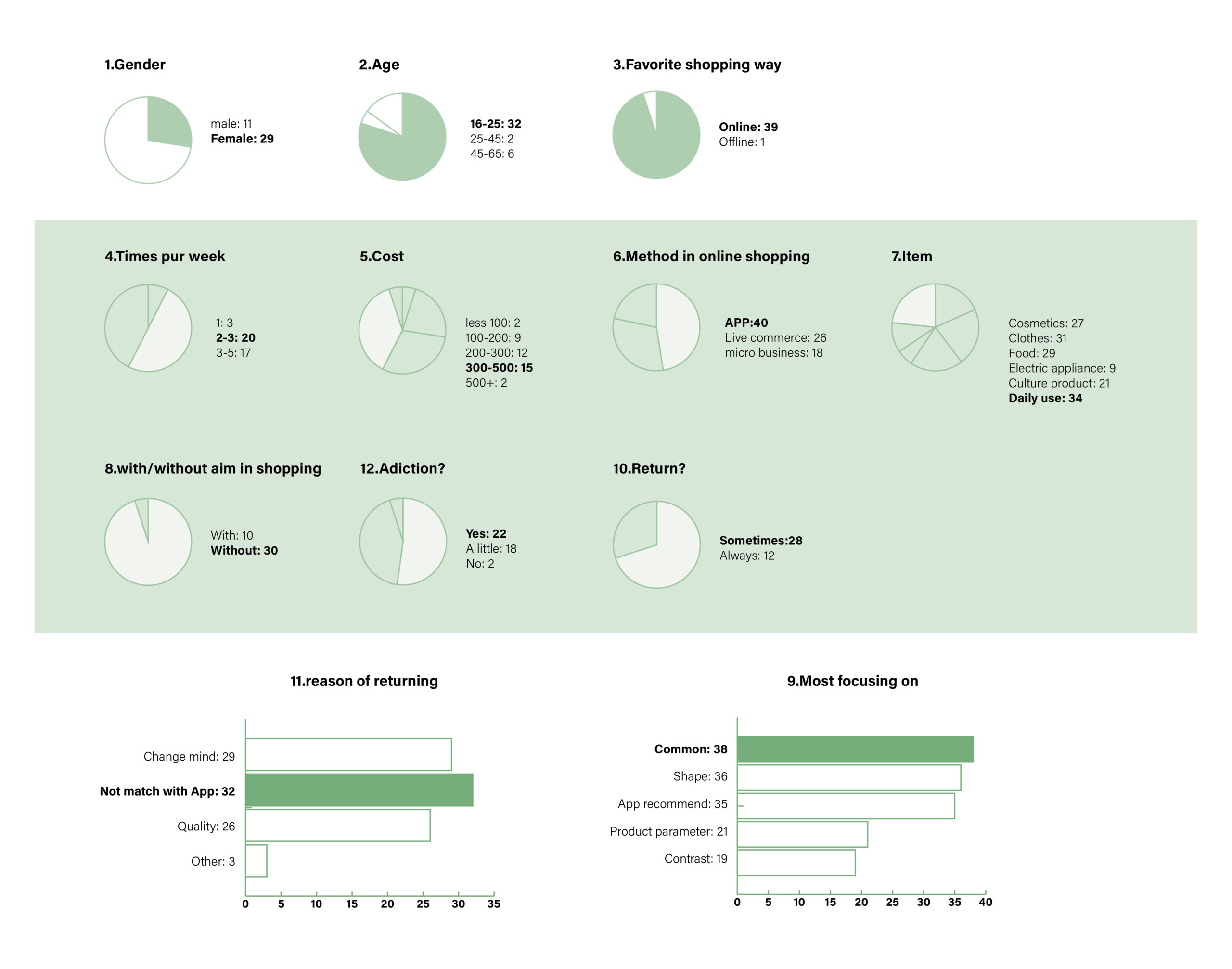
User journey map
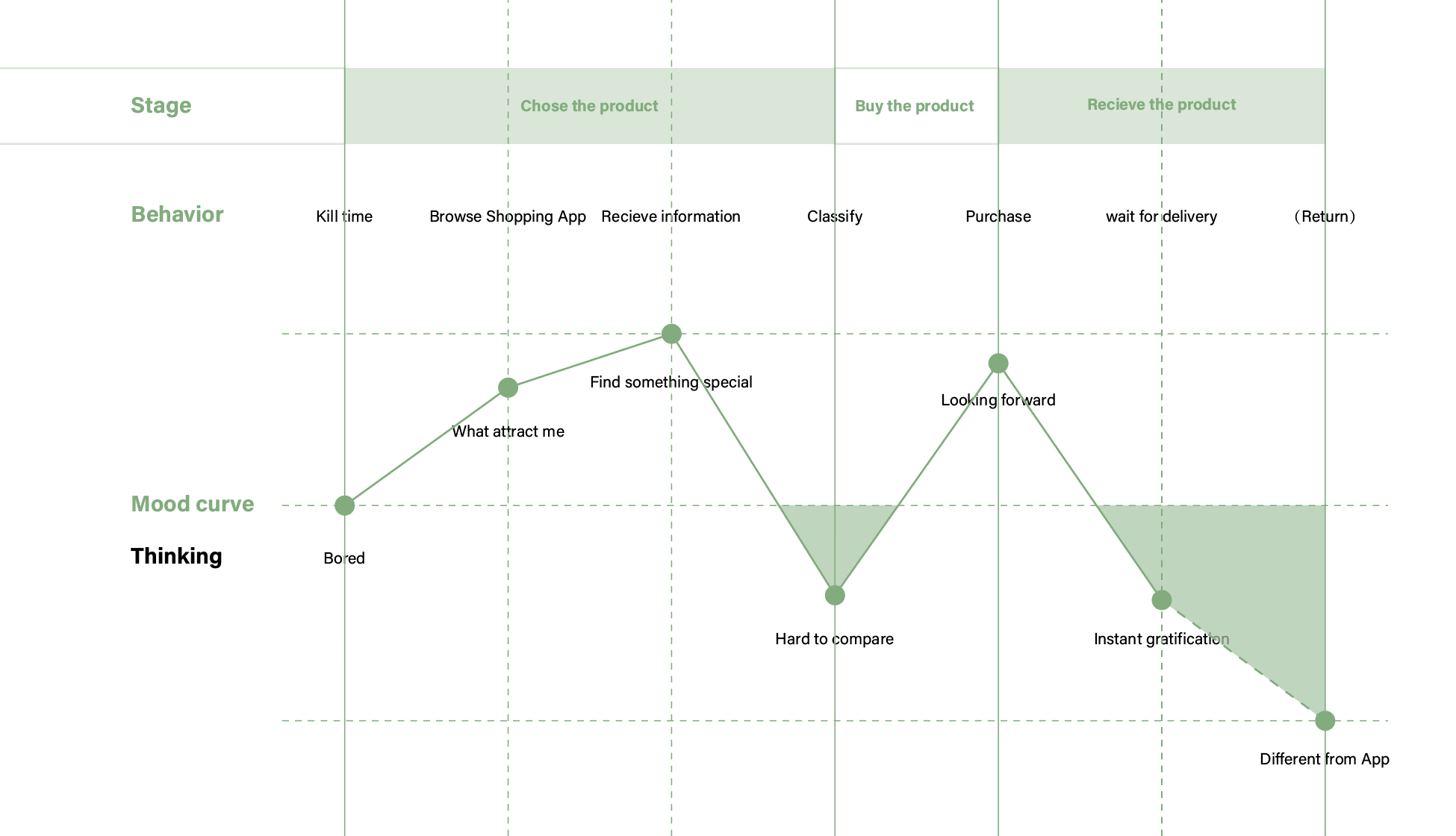
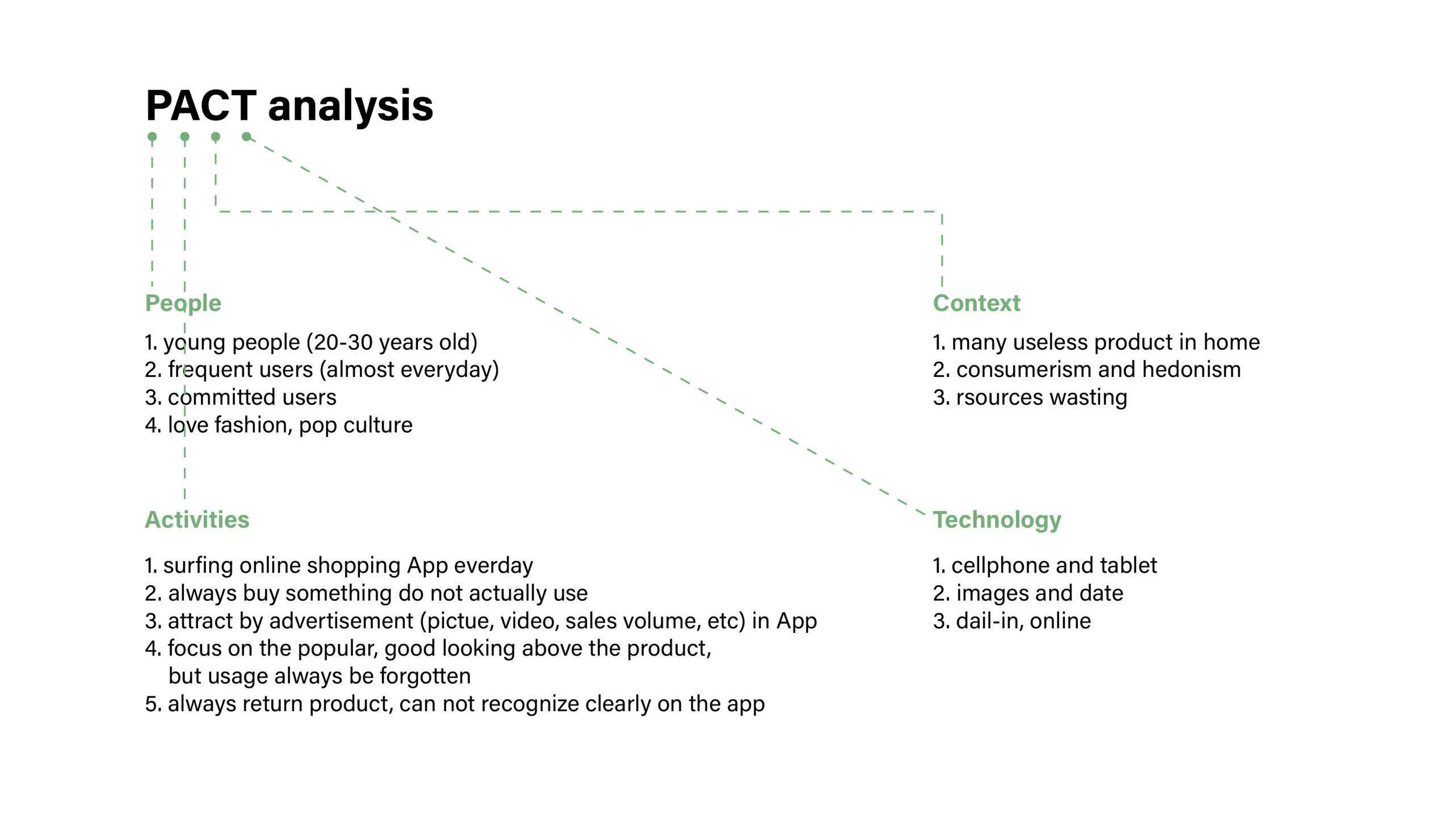

For those older user groups who have a clear goal before shopping, the general app cannot describe the parameters of the product in detail, nor can they clearly understand the specific use value of the product (for example, there is no function of comparing the goods, the product The classification function is messy)
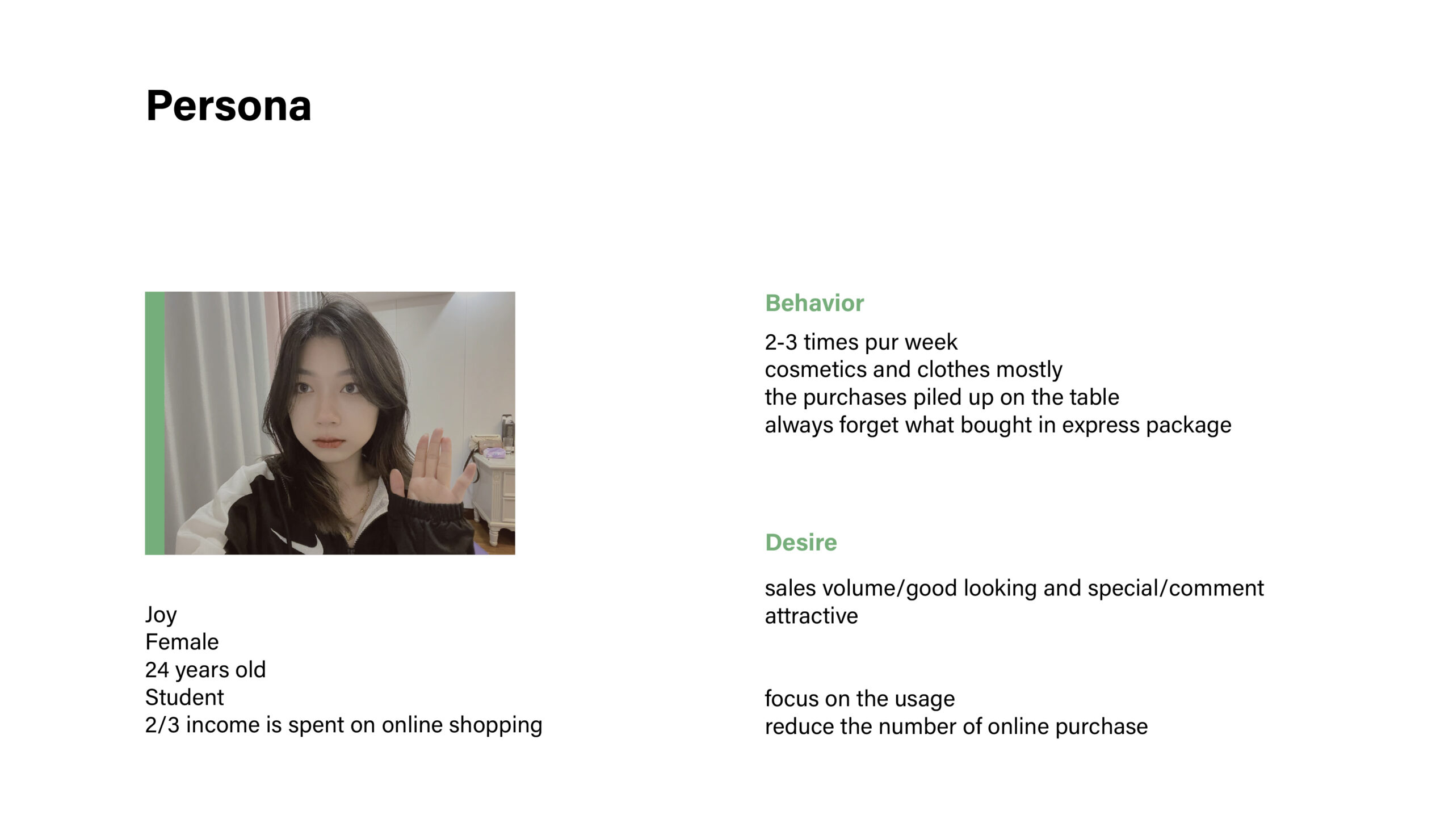
For user groups who are younger and often browse shopping apps, browsing apps is no longer for purchasing goods, but rather a way of entertainment. They do not have specific goals before shopping, but collect Shopping and browsing apps, attracted by some special products. And in most of their experiences, they don’t value the use value of the product, but the spiritual symbolic value. These are reflected in app reviews, main interface advertisements, sales, and so on.
Sketch
Aims
1. I hope users can use this app to be more Pay attention to the use value of commodities and minimize the impact of the symbolic value of commodities on users.
2.Users who have a clear goal can clearly and more conveniently understand the use value of the product.
Idea
Help users analyze and determine the specific use value of the goods they want to buy. After the user determines the specific use value of these goods, the system randomly expresses the goods according to these requirements
Preliminary flow chart
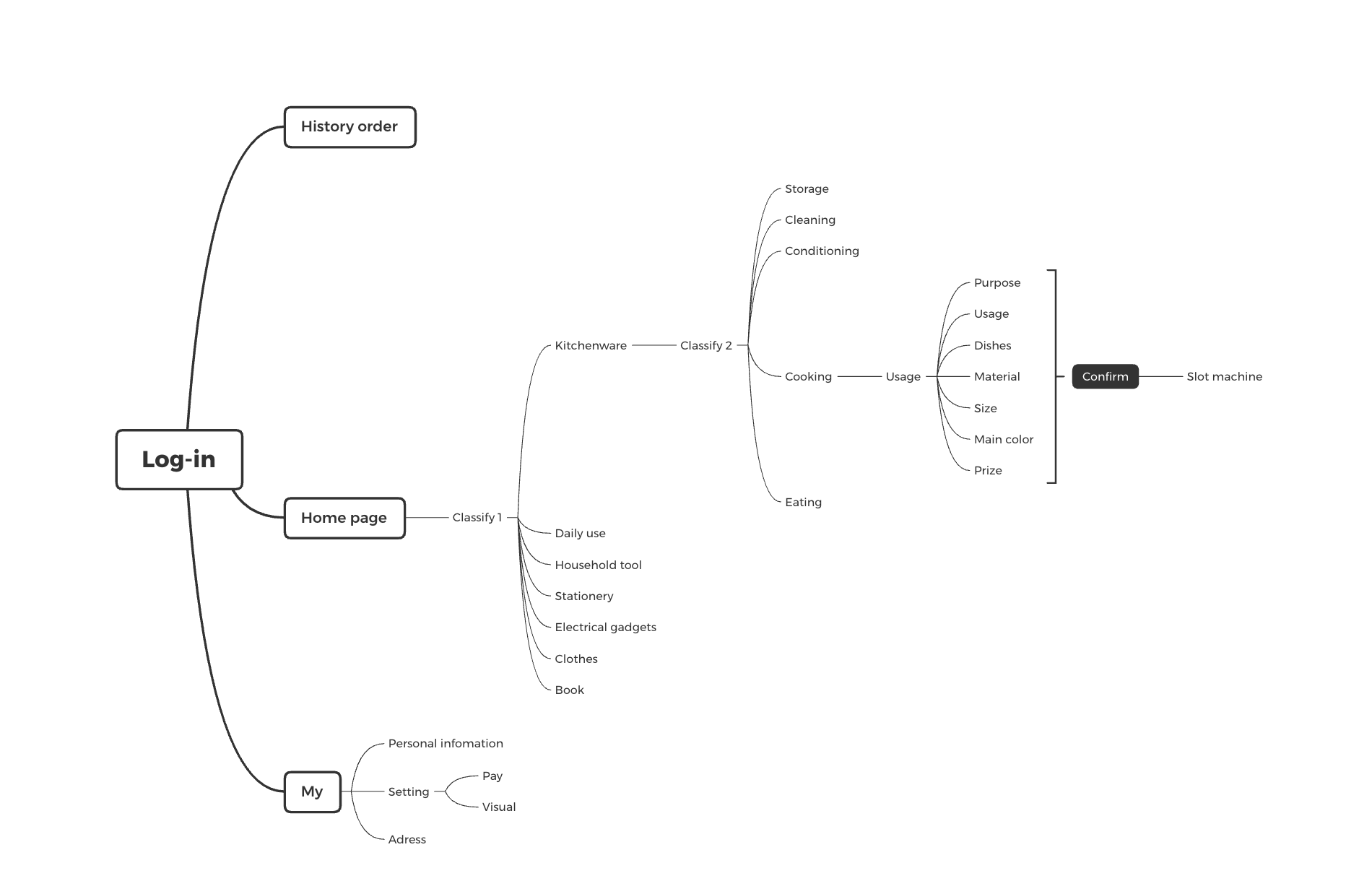
Preliminary wireframe

Prototype test

Feedback
- function is single
- Typesetting inconsistency in some detail
- Relationship with font (color&size) and background
- Buttons are too tight, and some buttons are unnecessary
Update of flow chart
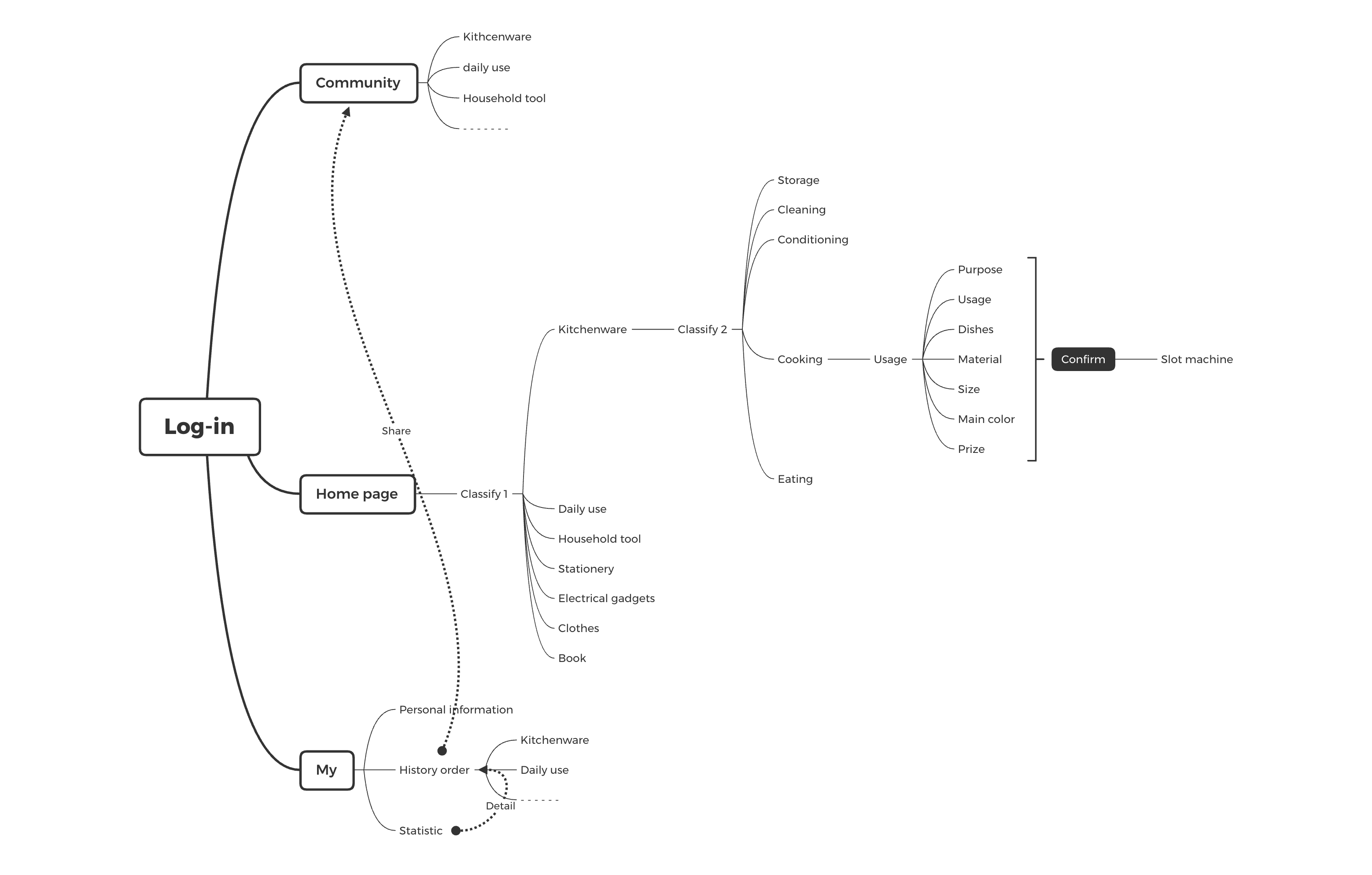
Change in visual part




Outcome
Video


Sketch book

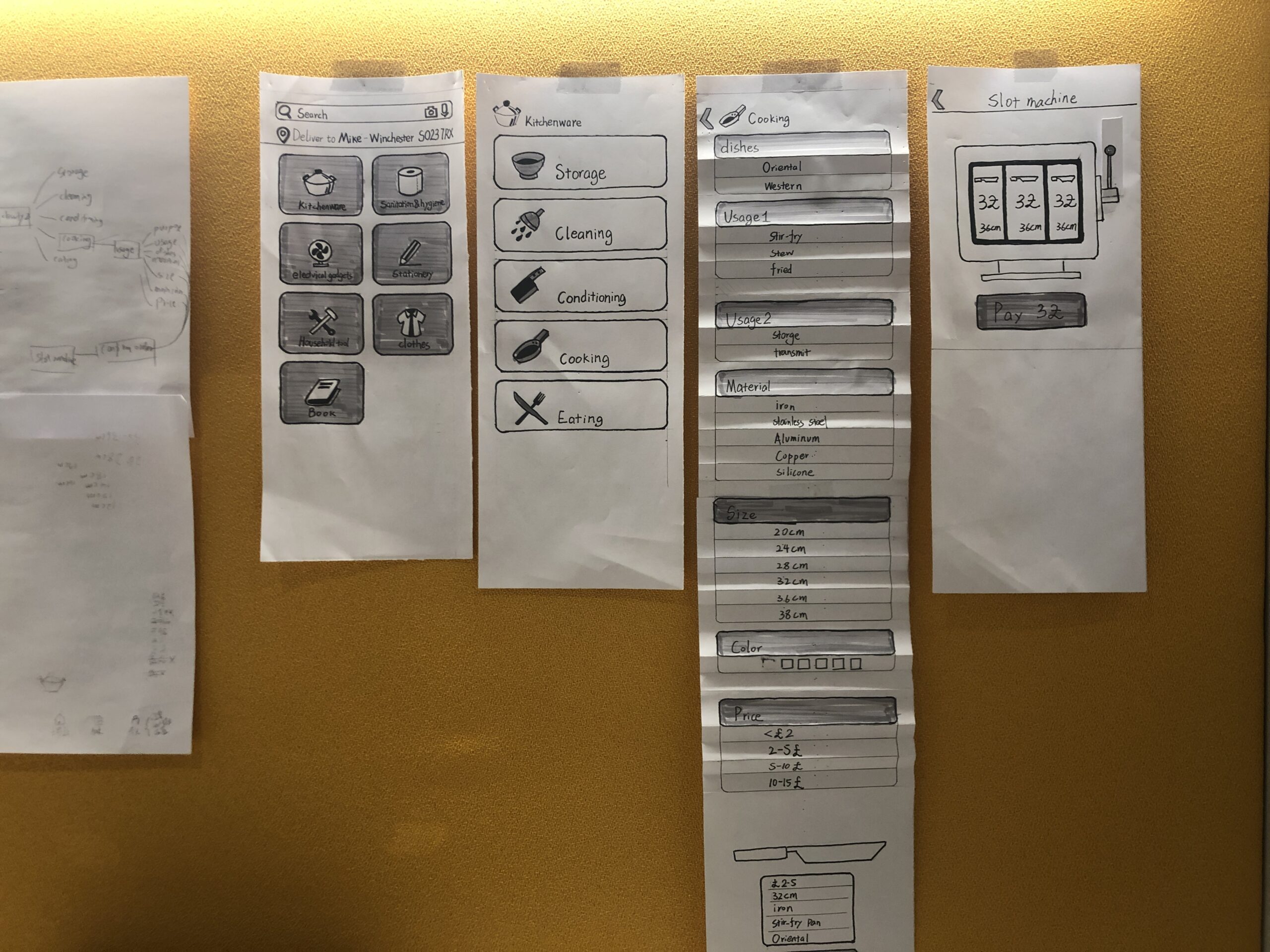
Reference
Baudrillard, Jean, George Ritzer, and Barry Smart. The Consumer Society: Myths and Structures. Los Angeles, CA: Sage, 2017.
Harari, Yuval Noaḥ. Sapiens: a Brief History of Humankind. New York: Harper Perennial, 2018.
Meredith, Robyn. 2007. The Elephant and the Dragon: The Economic Rise of India and China, and What it Means for All of Us. New York: WW Norton.
Sun, Wanning. “Bridal Photos and Diamond Rings: the Inequality of Romantic Consumption in China.” The Journal of Chinese Sociology4,no.1(2017). https://doi.org/10.1186/s40711-017-0063-4.
Bates, Clive. “Review of: ‘Tobacco-Containing Product.’” Qeios, 2021.https://doi.org/10.32388/52ch0h.